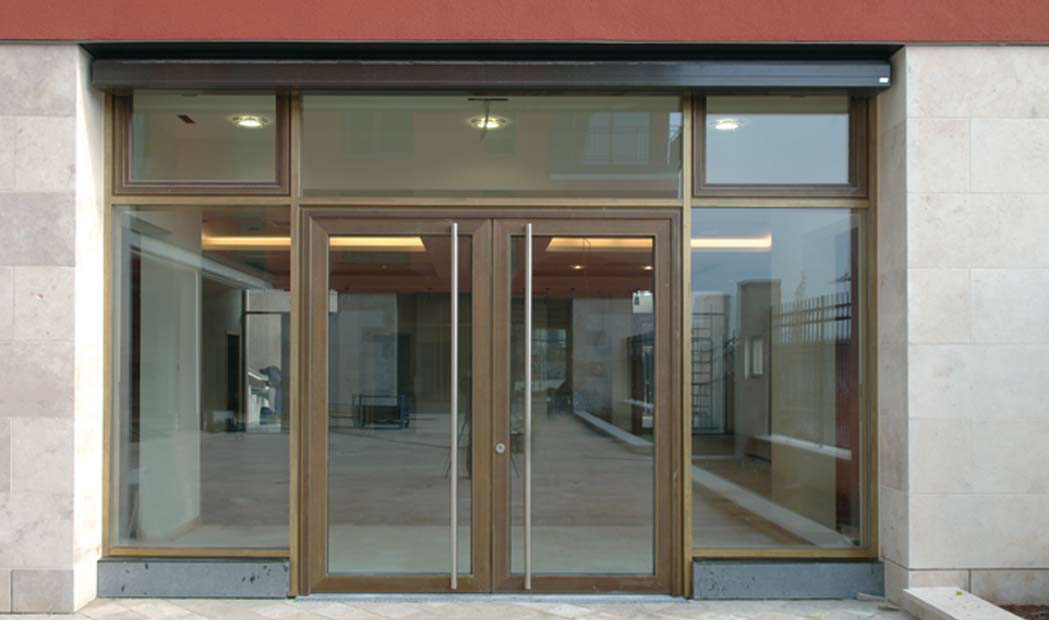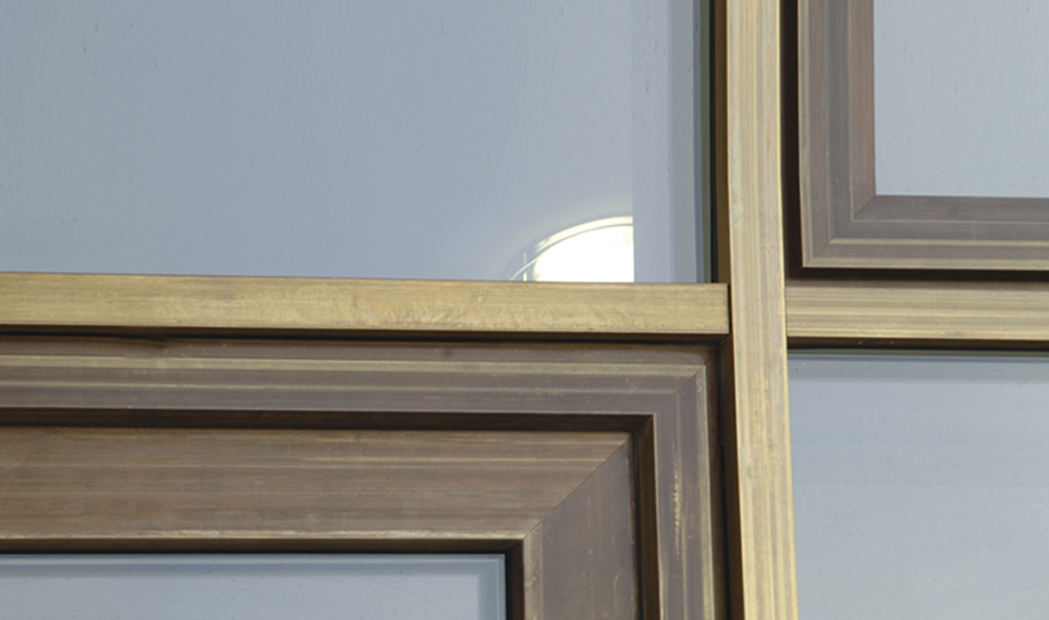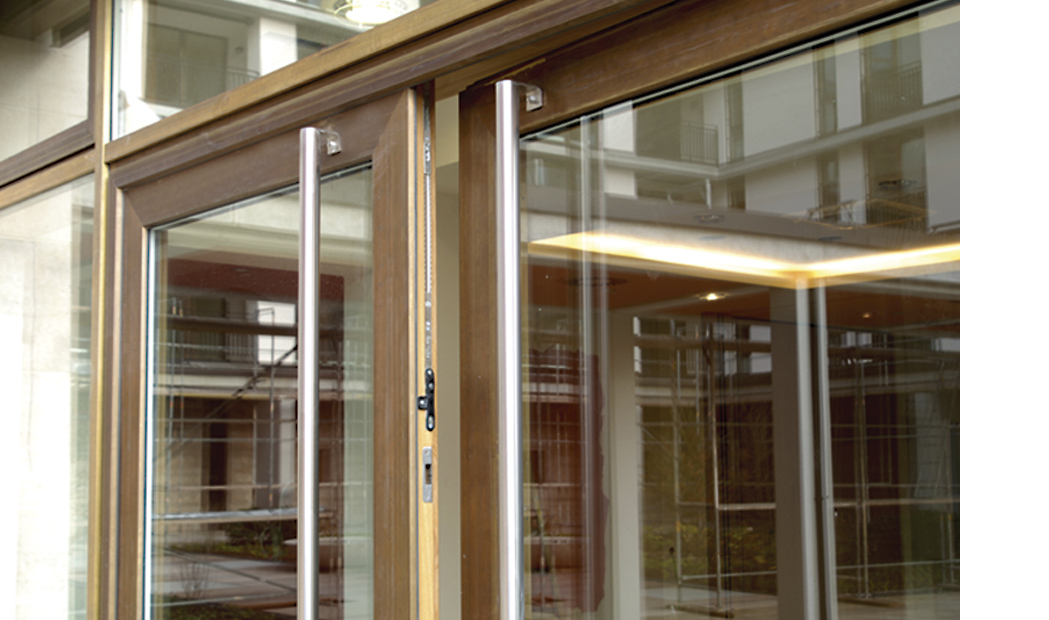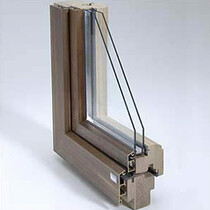Architectural bronze – a mixture of copper and brass
Regarding architectural bronze windows the copper alloy of the profiles does not need any surface treatment to be protected against weather influences.
The natural coating creates a durable protective film. The so-called bluing with the “bronze antique” effect accelerates this natural process. Due to their classic design, bronze profiles are ideal for refurbishing heritage-protected buildings.
Comparative values of the different materials
| Architectural Bronze | Aluminium | |||
| Specific weight | 8,3 | 2,7 | ||
| Thermal conduction W/m?K | 80 | 237 | ||
| Linear thermal expansion coefficient mm/mt X 1°C | 0,019 | 0,023 | ||
| Tensile modulus Mpa | 85000 | 69000 | ||
| Tensile strength Mpa | 390 | 200/240 | ||
| Threshold value plastic deformation at 0.2% Mpa | 200 | 170 | ||
| A-brass bar “architectural bronze” before extrusion | ||||
| B-extruded profiles in brass “architectural bronze” |
Architectural bronze windows impress with a stylish look and complete stylishly precious woods such as oak, Sipo mahagony or walnut.
The Rauh range offers a flush or sharp-edged solution for wall windows or post-and-beam insert windows. The indoor facing sash is also available in a sharp-edged solution.



